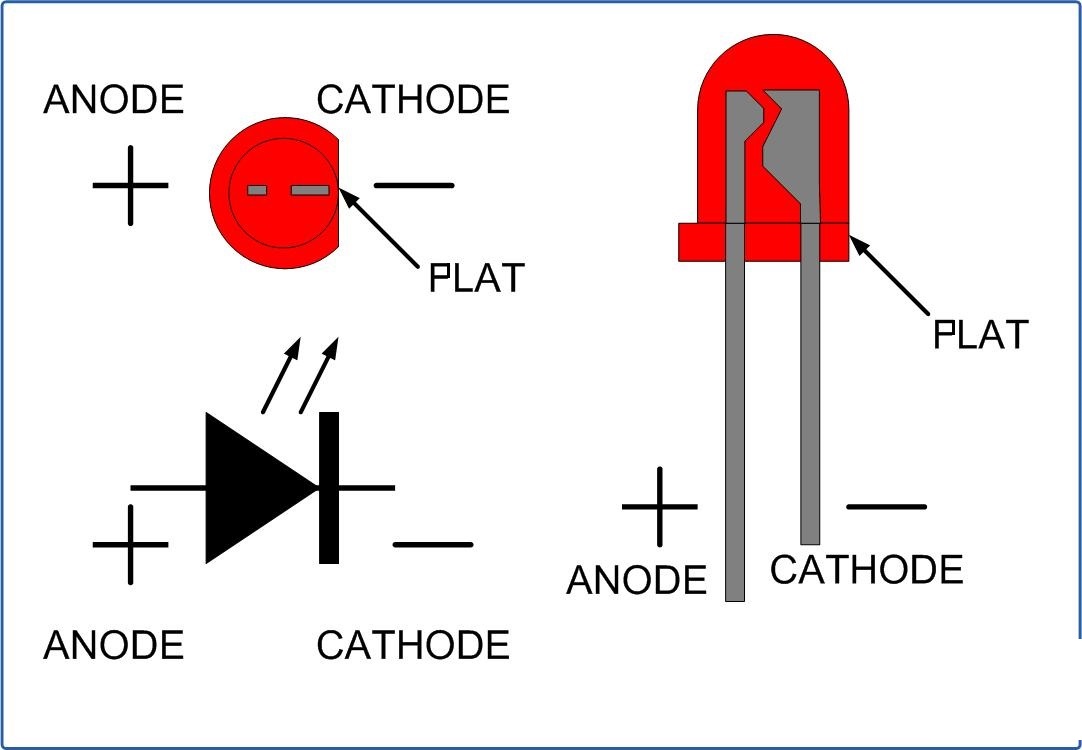Electronic Components
1. Supplies
- AA batteries (or a small rechargeable battery pack).
- Breadboard and jumper wires.
- Soldering supplies (if applicable).
- Basic tools: wire strippers, multimeter, etc.
Power Supply - From USB Mobile Charging Cable
Cut the end that is used for mobile charging and pull out the outer layer to expose 4 wires underneath.
- The Red wire acts as Anode(+ve) while
- the Black is used as Cathode(-ve)/Ground.
Then use the USB input end to connect with either Laptop or charging port or any power supply to avoid using batteries.
Step Up/Down Power Supply Module
Adjustable Boost Buck Converter 1.2V-24V Output
Use the mini circuit board with adjustable power supply
RGB multicolor LED
An RGB multicolor LED can come in two configurations: common cathode and common anode.
Common Cathode RGB LED
Configuration:
- In a common cathode RGB LED, all the cathodes (negative terminals) of the red, green, and blue LEDs are connected together and typically connected to ground (0V).
- Each of the anodes (positive terminals) of the individual LEDs is connected to a control signal or a resistor, which allows you to control the brightness and color by varying the voltage applied to each anode.
Pin Configuration:
- Pin 1: Red Anode
- Pin 2: Green Anode
- Pin 3: Blue Anode
- Pin 4: Common Cathode (connected to ground)
Operation: By applying a voltage to one or more of the anodes while keeping the common cathode grounded, you can mix the colors: Red: Turn on the red anode. Green: Turn on the green anode. Blue: Turn on the blue anode. Mixing Colors: Combine different intensities of red, green, and blue to create various colors (e.g., yellow = red + green, cyan = green + blue, magenta = red + blue).
Bench Power Supply
2. Basic Components
- Resistors (various values).
- Capacitors (e.g., 10µF, 100µF).
- LEDs (various colors).
- Diodes (1N4148 or similar).
- Zeiner Diode - gets activated with a certain voltage
Simple LED 0.3 or 0.5 mm
- longer leg - positive side/Anode
- shorter leg - negative side/Cathode
- if inner filament is visible, the larger one is cathode
- if the filament is not visible & legs are already cut,
- then locate the flat edge on the round base of the LED

-Forward Voltage (Vf): Appx. voltage of the LED is 2.0V (common for red LEDs).
- Forward Current (If): Typically around 20 mA (0.020 A)
3. Switches
- Push-button switches.
- Toggle switches, banana switches
4. Transistors
- NPN (like 2N3904) and PNP (like 2N3906) transistors. The TO-92 is a transistor package type commonly used for small, low-power transistors. It’s a plastic-encapsulated package with a distinctive shape that looks like a small cylinder with a flat edge on one side.
Active Components vs Passive
| Component Type | Examples | Function | Power Requirement |
|---|---|---|---|
| Active | Transistors, ICs, Op-Amps | Amplify, switch, generate signals | Needs an external power source |
| Passive | Resistors, Capacitors, Inductors | Store or dissipate energy, filter | No external power source needed |
5. Integrated Circuits
- 555 timer IC.
- Simple logic gate ICs (like AND, OR).
6. Sensors
- Photoresistor (LDR).
- Temperature sensor (LM35 or similar).
IR Sensor
IR LEDs typically operate at wavelengths between 700 nm and 1 mm, depending on the specific type and application.
- IR Transmitter : IR LED - Emits infrared light.
- IR Receiver : IR Photodiode or Phototransistor - Detects the infrared light and converts it back into an electrical signal.
7. Motors
- Small DC motors.
- Servo motors.
- brushless DC motor - Drone motor with Type A and B fans